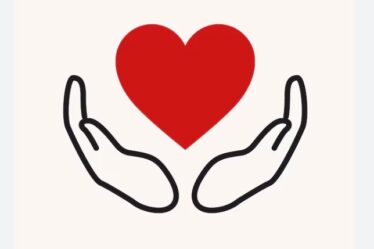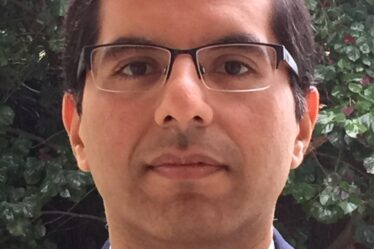Accreditation. Never before on MGIMS campus, did this word buzz as much as it did in the last week of April.
Accreditation, for dummies, is a peer-review process that assures the quality of the education students receive. MGIMS believes that accreditation is an important mechanism to assess, evaluate, and improve the quality of the programs it offers to students. In India this task is done by National Assessment and Accreditation Council (NAAC), an autonomous institution of the University Grants Commission (UGC). NAAC evaluates educational institutions using established criteria, standards and procedures. MGIMS having never undergone a formal evaluation before, thought that the time was ripe to undergo an external evaluation- and who else could this job better than NAAC?
Contrary to what most people perceive, accreditation is not a ranking system. It is simply an assurance that a program or an institution meets quality standards established by the profession for which it prepares its students. Thus, an accredited medical school aimed at designing quality medical graduates must meet the quality standards set by the medical profession.
To me, accreditation is like an annual health checkup. My patients, past presbyopic age, undergo a periodic evaluation. We collect data on their weight, waist size, blood pressure, serum cholesterol, blood glucose, diet and smoking status- key predictors that tell me how well their heart is performing. NAAC also chooses a number of key variables that helps it assess how well the institute is performing. It collects data on how the institute enrolls students; how they are taught, monitored and evaluated; and how well-developed are the teaching and evaluation instruments. It also looks at the quality of research, the infrastructure, the teacher-student relationships, and the innovative methods the teachers have designed to help students understand the art and science of medicine. No less important is the quality and competency of the people who lead the institute, the goals and the objectives of the institute, its mission statement and how does it manage to make both ends meet.
Several months before the anticipated accreditation visit, MGIMS listed its goals, identified its strengths, wrote down the educational and infrastructure resources, prepared the institutional Self-study Report (SSR) and submitted the same to NAAC. Several weeks in advance, NAAC chose a site-visit team of five members, consisting of clinicians, administrators and educationists. The team was briefed on the accreditation process, and the dates were finalized.
MGIMS made hectic preparations for the visit. The staff and stakeholders were repeatedly briefed. The roles and responsibilities of key persons were defined. Tasks were listed and delegated. Deadlines were drawn. Healthcare workers were coaxed, cajoled and convinced to put their best foot forward. Nurses, technicians, clerks, paramedics, orderlies and janitors were assigned specific roles. Dirt, dust and cobwebs in every nook and corner of the sprawling campus (it measures 2, 97,000 sft over 457-acres) was probingly looked for and removed. The walls were repainted, floors scrubbed, and the roofs repeatedly vacuum-cleaned. Leaking taps were fixed, broken glasses replaced and the cracking windows repaired. The tangled maze of cables, cords and wires emerging from the computers, modems, printers, scanners and routers was carefully organized. Visual graphics and signages were designed to display way-finding information at strategic places in the hospital. Hostels and toilets received a special treatment, as did the kitchen. Labs were refurbished, and the classrooms got new blackboards, curtains and coolers. Office cupboards got rid of the clutter. Junk papers, outdated equipment and rotten paraphernalia got hand-picked and thrown off the campus. Off went old chairs, and seminar rooms wore a new academic look.
Published articles were re-printed and put in new files. The documents were re-written, edited and aesthetically formatted. The published research was classified into several categories (national vs. international; indexed vs. non-indexed; original articles vs. junk articles; journals with high impact factor vs. ones with low impact factor). Realization dawned on young faculty members how important was impact factor and why they should pick up high-impact factor journals to publish their article. Data on conferences, symposia, seminars and workshops was re-collected, cleaned, analyzed and displayed. Residents and faculty in each department spent sleepless nights to strengthen its strengths and weaken its weaknesses. All departments were emailed PowerPoint templates for showcasing their information and were repeatedly told that they must keep it short. An eight-minute long and eight-slide full PowerPoint presentation underwent countless revisions and rehearsals- because several heads of the department believed that squeezing the entire information of the department into an 8-minute slot was like trying to pack an octopus in a suitcase. Some heads of the department developed cold feet, some were needlessly more exuberant. The performance anxiety was thick in the air.
On 27 April, the NAAC team arrived in Sevagram. MGIMS, freshly bathed, tastefully attired, and carefully groomed for the event had regained its physical charm. It was all set to win hearts and influence people.
The peer team composed of an NAAC-appointed chairperson, a secretary, and three teachers representing the medical disciplines. The team members were experienced enough to know what is usually wrong with the health of medical schools. MGIMS appointed a co-coordinator who shadowed the team and helped it carry out the evaluation effectively and efficiently. During the on-campus visit, the evaluation team reviewed course materials, browsed through syllabi, gazed at the attendance registers, and eyeballed the university results. The team interviewed students, faculty, alumni, parents, paramedics, patients, support staff and the administrators. The team walked the labyrinthine corridors of the hospital and verified the data as it braved April afternoons in Sevagram and moved across the basic science departments, laboratories, wards and operating rooms. The team checked if the toilet for the patients was clean- it was. The team examined if the lights and the fans in the lecture halls actually worked or not- they did. The team asked the patients how satisfied they were with the hospital services- most said yes. The team checked the efficiency of the hospital information system- it met their expectation.
The team met daily to develop the report. Following its campus visit, the team provided MGIMS with a written report of the evaluation. This allowed the institute to correct any misrepresentations or errors of fact, as well as identify and address any unvoiced concerns.
On April 29, in an exit meeting, Dr. Chandrakant Kokate, the chairperson of the peer team gave MGIMS feedback and recommendations on how to improve and meet standards of accreditation based on the survey team report. And if his words are anything to go by, MGIMS seems to have played a reasonably satisfying inning.
Dr. Kokate spoke eloquently at the exit meeting. It was a brilliant analysis from an astute administrator who is a humanist at heart- qualities that he showcased with charm and grace in his 45-minute long speech that kept the audience spellbound. Not an easy task, considering that the clock was about to strike 1:00 when he rose to speak. Speaking with passion and vigor, he captured the essence of MGIMS- what we stand for, our rich heritage, our values, our aspirations, our achievements, our shortcomings, the opportunities that we need to seize with both hands and the threats that are looming large in the not too distant horizon. He told us a fast-paced and engrossing tale of the many known and not-so-well-known happenings in the institute. Gifted with the proverbial elephantine memory- he carried no written notes with him all through his speech- he shared all facts and numbers with a remarkable accuracy. A wonderful story teller, he told the audience stories that it could relate to, applauding the achievers and gently chiding those whose lack-a- daisical attitude merited urgent change. Narratives enlivened by vivid anecdotes and subtle turn of phrases.
The peer team chairman identified several issues that institute needs to focus on: designing better-integrated curricula; greater focus on student-centered learning (especially problem-based learning); greater focus on teaching communication skills and ethics in patient care; more diverse assessment strategies; more focus on population health and evidence-informed healthcare; explicit attention to personal and professional development; a stronger role for -and better use of -information technology in the hospital; use of electronic resources for medical education; designing and executing high-quality basic as well as clinical research studies; winning grants and tapping financial resources; metamorphosing an informal alumni association into a formal registered organization, aggressive fund-raising and asking 2500+ alumni to donate generously for building infrastructure such as an auditorium, a guest house, a gymnasium, a sports complex, better hostels, libraries and reading rooms.
The NAAC peer team chairman gave us the pleasure of hearing about our own institute. His succinct comments would surely help MGIMS identify strengths, concerns, weaknesses, deficiencies, and recommendations for improvements. His perspective will be valued by anyone interested in the past, present, and future of the institute. He reminded us that the institute golden jubilee was just seven years away, that we should not rest on our laurels and that the preparations for celebrating the historical event must begin quickly!
Understandably, almost everyone at MGIMS is keen to know the result of the evaluation. It is almost like waiting for the results after writing an exam. Did MGIMS earn the NAAC team’s approving nod? What letter grade was assigned to MGIMS? And – on a 4-point scale- what Cumulative Grade Point Average (CGPA) did it earn? Well, the grades will be assigned based on the peer team report. MGIMS faculty and students will have to wait for the result – as always with bated breaths and crossed fingers!



I bow to you, thee Master. Simply superb. Sir, i have become a fan of your inditing skills.
You have put it so well,you have my heart racing for the final verdict 🙂
Congratulations..
Only infrastructure alone could not create an academic institution. It is appreciable that the services rendered by our teachers have a deep commitment to improve the college and with an accepted degree of professionalism.
Underlining the emphasis on quality performance, our institute is doing all that is needed to improve quality like adopting a transparent process for admission, periodic evaluation of teaching programmes, and encouragement to faculty for professional improvement.
MGIMS has already put in place a system for optimal development and use of resources with equal importance according to co-curricular areas and academic work.
In accordance with the lofty vision and mission of our institute, the faculty and the students are doing their very best to reach high standards of quality medical education.
It is certainly not an easy task to set high standards and then excel these standards year after year.
MGIMS has been a forerunner in incorporating the latest treatment trends and medical teaching technologies – efforts which have won acclaim in academic circles.
The installation of HIS facility, availability of latest updated library with internet facilities, digital component for teaching – learning are the real feathers in MGIMS cap.
I have not the slightest doubt that MGIMS will continue to play its leading role in multifarious activities and achievements.
I am fully confident that MGIMS will march ahead and add more achievements to its name.
I would like to send my best wishes to the Dean, teachers, staff, residents and students for doing a commendable task.
Thnks sir, I was not fortunate enough to hear from Dr. Kokate about our institute But reading ur blog has been compensatory. Superbly analysed. Yes we are waiting with batted breathe about result.
fantastic Sir!Your words took be back to those agonizing days of preparation . But the exit meeting so aptly described by you was like a balm on all those aches. Waiting for the final word!!!!!!!!
Absolutetly wonderful Sir, You are a great storyteller; I can actually visulise the preaperation and the visit of the NAAC team.Your narration of Dr Kokate's talk is amazing…..though would like to listen to him too.Sir, as you keep on adding various threads of diversified issues to your blog,I actally look forward to your write ups.As a allumini of MGIMS eagerly waiting for the results and of course your next post……
SP,
I was eagerly waiting for your blog on this inspection as I know that your words would reflect well all the hardships, anxious moments and also some rewards that we went through in the last week.
– MVR Reddy
Was is not another pre-inspection flurry of actions to show what we should be, rather than what we are ?? How honest were self appraisal reports, and were they really acted upon ? Do we have any "real" feedback systems in place – Feedbacks which loop back onto actions ?
It may have been an annual health check, but was it a reality-check ? Will we really change things after a pretention that we actually have ?
Yes, everyone one will wait for a NAAC grade, and if we get a good one, will have a false sense of perfection. If we donot, I guess will blame the grading and claim being overboard.
I sincerely hope neither of this happens.
– Rajnish